It's the classic question every wine lover faces: you've opened a beautiful bottle of McLaren Vale Shiraz, enjoyed a glass or two, but now what? How long will the rest of the bottle stay fresh? It’s a crucial bit of knowledge for getting the most out of every drop and making sure your wine tastes just as the winemaker intended.
Generally, you can expect an opened bottle of wine to last for around 3-5 days if you store it properly. But that's just a starting point. This window can shrink to just one day for delicate sparkling wines or stretch out for weeks—even months—for robust fortified wines like Port. It all comes down to the style of wine and how you look after it once the cork is popped.
Your Guide to Opened Wine Freshness
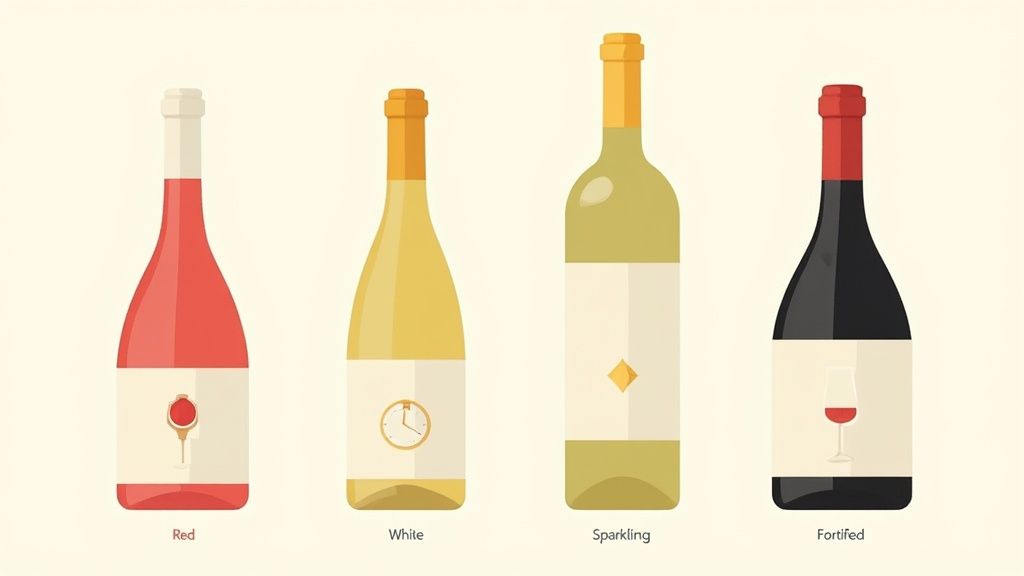
The moment you open a bottle, a countdown begins. Oxygen, which is a bit of a "frenemy" to wine, rushes in and starts a chemical reaction. A little bit of air is a good thing initially—it helps the wine "open up" and release its complex aromas and flavours. But give it too much time, and that same oxygen will cause the wine to taste flat, tired, and eventually sour.
In Australia, how long you've got depends entirely on what you're drinking. A big, bold red like a Shiraz or Cabernet Sauvignon has natural defences in the form of tannins, which help it hold up for 3 to 6 days. Lighter whites like a Chardonnay or Sauvignon Blanc will typically be at their best for 3 to 5 days. For a deeper dive, you can find great information from experts who explain how different wines expire once they're opened.
The Rule of Thumb: The more structure a wine has—whether from tannins, acidity, sugar, or alcohol—the better it can fight off the effects of oxygen after being opened.
Opened Wine Lifespan At a Glance
To make things easy, here’s a quick reference table to guide you. Just remember to always pop your opened wine in the fridge (yes, even the reds!) to slow down the oxidation process.
| Wine Type | Typical Lifespan After Opening | Key Preservation Factor |
|---|---|---|
| Sparkling Wine | 1–3 days | Carbonation (needs a proper stopper) |
| Light White & Rosé | 3–5 days | Acidity |
| Full-Bodied White | 3–5 days | Structure & Acidity |
| Red Wine | 3–6 days | Tannins & Acidity |
| Fortified Wine | 28+ days | High Alcohol & Sugar |
Think of this chart as your go-to guide. Now, let’s get into the why behind these numbers and cover the best ways to get the most out of every single bottle.
Why Your Perfect Wine Turns Sour
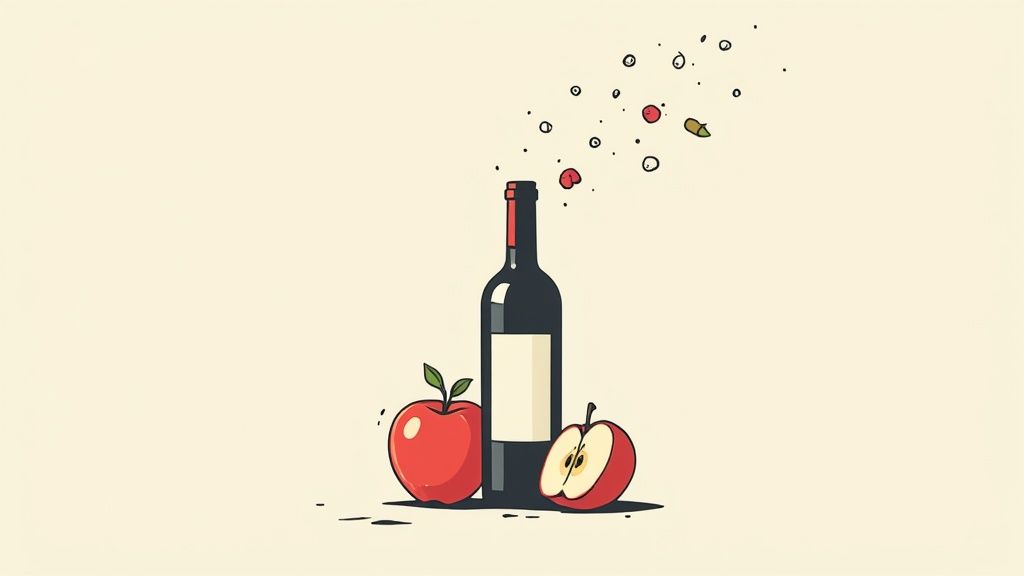
Have you ever wondered what happens inside a bottle of wine once you’ve popped the cork? The best way to think about it is to picture a freshly sliced apple left on the kitchen counter. At first, it's crisp and perfect, but give it a bit of time, and you'll see it start to brown and lose its fresh flavour.
That exact process, called oxidation, is the number one reason your beautiful wine eventually loses its magic.
The moment you pull that cork, oxygen floods in and starts to mingle with all the delicate compounds that give a wine its unique character. This isn't always a bad thing—in fact, a little bit of oxygen right after opening can help a wine "breathe," softening its tannins and releasing all those beautiful, complex aromas.
But after a day or two, that friendly interaction goes too far. The oxygen begins to aggressively break down the wine’s lovely fruit flavours and floral notes, swapping them for dull, nutty, or bruised-apple characteristics. It's a slow-motion transformation from delicious to disappointing.
The Other Culprit in Your Bottle
While oxidation is the main villain of this story, there’s another microscopic troublemaker waiting in the wings: acetic acid bacteria. These microbes are all around us, and they're present in wine, but they need one key ingredient to kick into gear—oxygen.
Once the bottle is open and oxygen is available, these bacteria get to work. They begin to consume the alcohol in the wine and convert it into acetic acid, which is the main component of vinegar. This is what’s behind that sharp, sour, and vinegary smell you get from a wine that's been open for way too long.
If you start to notice these signs, you can find out more about how to tell if a wine has gone bad to confirm your suspicions.
By understanding these two natural processes—oxidation and bacterial activity—you can see why proper storage is so crucial. The goal of every preservation method is simply to limit your wine's exposure to oxygen.
The Fridge Is Your Wine's Best Friend
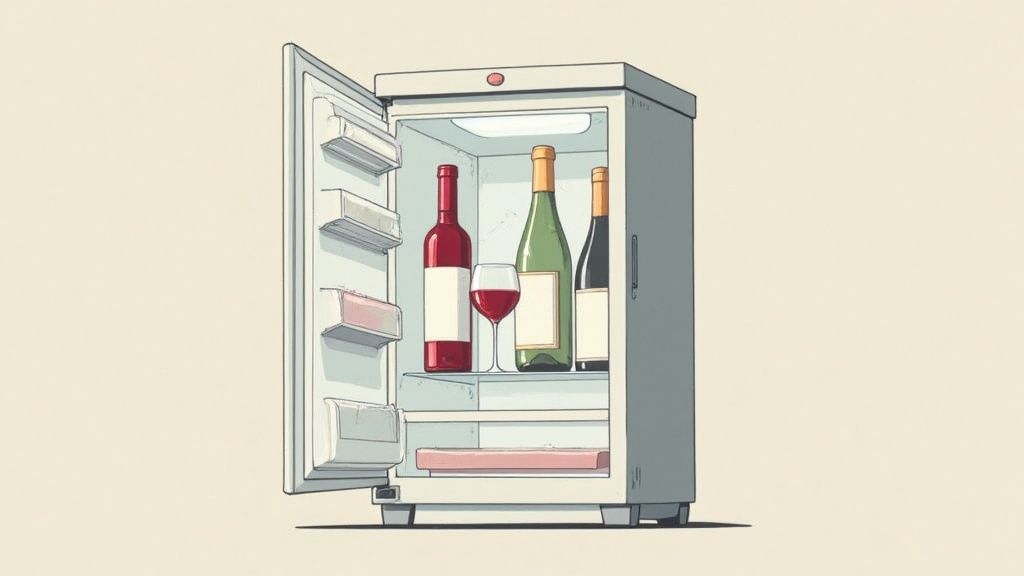
If there’s just one thing you take away from this guide, let it be this: temperature is the number one factor in how long your wine lasts after you've popped the cork. Heat is the absolute enemy of fresh wine. Think of it as hitting the fast-forward button on all the chemical reactions that make a wine go flat and dull.
Leaving an open bottle on the kitchen counter, especially in our warm Aussie climate, is a surefire way to end up with a disappointing glass the next day. Every degree of warmth accelerates oxidation, stripping the wine of its vibrant fruit flavours and lovely aromas.
The Golden Rule of Opened Wine: Whether it's red, white, rosé, or sparkling, every single opened bottle belongs in the fridge. No exceptions. It’s the easiest and most effective trick in the book to extend its life.
But What About My Reds?
This is where I see the most confusion. It's a common myth that you should leave an opened red wine out at room temperature. But the cool, stable environment of the fridge is just as critical for a big, bold Shiraz as it is for a zesty Sauvignon Blanc.
The cold seriously slows down that pesky oxidation process, preserving the wine’s structure and flavour for days longer than it would ever survive on the benchtop. Of course, you don’t want to drink it ice-cold.
The solution is incredibly simple:
- Store your opened red in the fridge as soon as you're done pouring.
- Remove it about 20-30 minutes before you want your next glass.
- Allow it to gently warm up on the counter to a more enjoyable serving temperature.
This simple routine preserves its quality without sacrificing the flavours the winemaker intended you to experience. Understanding this is a key part of our complete guide to wine storage, which digs into the best practices for both opened and sealed bottles.
The science backs this up, too. Studies show that wines stored at around 15°C hold onto their character far better than those kept in warmer conditions. Once you get above 25°C, spoilage happens incredibly fast, which is why your fridge—sitting at a chilly 4-7°C—is the perfect spot to keep that wine fresh.
Understanding Why Different Wines Age Differently
Not all wines are created equal, especially when it comes to how long they stay fresh after you’ve popped the cork. The answer to "how long does wine last after opening?" really comes down to its natural structure. Think of it as a wine's built-in armour against oxygen, its greatest enemy once opened.
This is exactly why a big, bold red can easily outlast a delicate white wine in the fridge. The secret lies in a wine's natural preservatives—compounds like tannins, acid, alcohol, and sugar. Getting to know these elements is the key to understanding why the lifespans we mentioned earlier vary so much from one style to another.
Red Wine and Tannins
For red wines, the first line of defence is tannins. These are the natural compounds that come from grape skins, seeds, and stems, creating that slightly bitter, drying sensation on your tongue. If you’ve ever had a cup of strong-brewed black tea, you know the feeling—that’s tannin at work.
Tannins are powerful antioxidants. In simple terms, they sacrifice themselves to protect the wine’s delicate fruit flavours from oxygen. So, the more tannic a wine is—like a young Cabernet Sauvignon or Shiraz—the more "armour" it has, allowing it to stay fresher for longer after being opened.
White Wine and Acidity
White and rosé wines generally don't have a lot of tannin, so they rely on a different protector: acidity. That crisp, mouth-watering quality you get from a Sauvignon Blanc or Riesling does more than just make the wine refreshing. It creates an environment that slows down the bacteria that can turn a wine sour.
High acidity acts as a formidable shield, slowing down the chemical reactions of oxidation and preserving the wine's bright, vibrant character for several days in the fridge.
Other Key Factors
But the story doesn't end there. A few other players have a big say in a wine’s staying power, explaining the huge range of lifespans you see across different styles.
- Sparkling Wine: Those delightful bubbles are a huge part of the experience. Once opened, the carbon dioxide quickly escapes, causing the wine to go flat within 1-3 days. A proper sparkling wine stopper is absolutely essential to trap as much fizz as possible.
- Fortified Wine: Wines like Port or Sherry are in a league of their own, lasting for weeks or even months. Their secret weapon is a high alcohol content, usually around 18-20%, which acts as a powerful preservative that most microbes simply can't survive in.
Learning about the science behind wine aging helps to explain why these characteristics are so important both before and after a bottle is opened.
Practical Tools And Tricks To Keep Wine Fresh
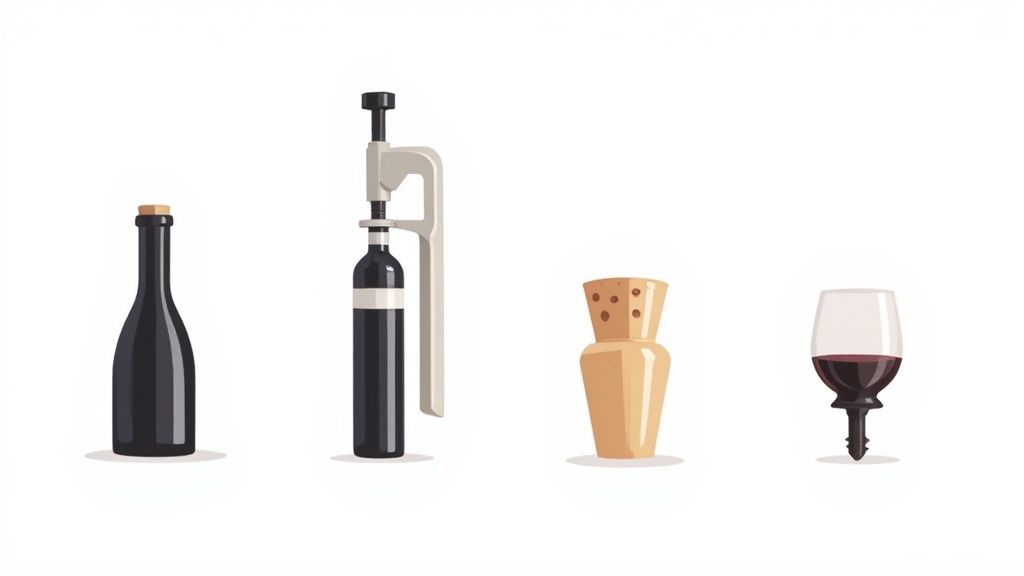
Alright, now that you're armed with the science, let's put it into action. The good news is you don't need a heap of expensive gear to get a few extra days out of that beautiful bottle of wine. Often, the simplest tricks make the biggest difference.
It starts with the humble cork. When you go to put it back in, always use the "clean" side—the one that hasn't been sitting out in the open air. This tiny switch helps create a tighter, more sanitary seal. From there, the golden rule is simple: every opened bottle, whether it's red or white, belongs in the fridge. Cold temperatures are your best friend for slowing down that pesky oxidation process.
Upgrading Your Preservation Game
For those nights when you open a really special bottle and know you won't finish it, a few affordable gadgets can be a game-changer. These tools are all designed with one goal: to kick oxygen out of the bottle and keep your wine tasting fresh.
Here are a few of the most popular options you’ll find:
- Wine Vacuum Pumps: These are probably the most common tools you'll see. You just pop a special rubber stopper in the bottle and use a small, manual pump to suck out most of the air. It creates a partial vacuum that dramatically slows down oxidation.
- Inert Gas Systems: This is a slightly more advanced method, but it’s incredibly effective. You spray a tiny amount of a harmless, odourless gas (usually argon) into the bottle. Because this gas is heavier than oxygen, it forms a protective blanket right on the surface of the wine, stopping air from ever touching it.
- Specialised Stoppers: If you love your bubbly, you’ll know a regular cork just won’t cut it. A hinged sparkling wine stopper is designed to clamp securely onto the bottle's lip, trapping all that precious carbonation. It's the secret to keeping your sparkling wine fizzy for an extra day or two.
Investing in a preservation method is a really smart move. In Australia, it's estimated that a staggering 20-25% of opened wine ends up down the drain due to spoilage. Simple tools like vacuum pumps directly combat this issue, helping you waste less and enjoy more from every single bottle.
If you’re serious about your collection, you might have dedicated storage. Understanding common wine cooler issues is crucial for making sure your investment is properly protected.
Choosing Your Wine Preservation Method
Not sure which tool is right for you? It really comes down to how often you open a bottle without finishing it and what kind of wines you drink. This table breaks down the most common options to help you decide.
| Method / Tool | How It Works | Effectiveness | Estimated Cost |
|---|---|---|---|
| Vacuum Pump | A rubber stopper and manual pump remove air from the bottle, creating a partial vacuum. | Good. Adds 2-4 days of life. Best for everyday reds and whites. | $20 - $40 |
| Inert Gas (Argon) | Sprays a layer of harmless, heavy gas over the wine, physically blocking oxygen. | Excellent. Can add 1-2 weeks. Ideal for preserving high-quality or delicate wines. | $30 - $60 (plus refills) |
| Sparkling Stopper | A hinged, clamp-down stopper that creates an airtight seal to trap carbonation. | Essential for sparkling. Keeps bubbles fresh for 1-3 days. | $15 - $30 |
| Just the Cork | Re-inserting the original cork and refrigerating the bottle. | Basic. Best for finishing within 1-2 days. Better than nothing! | Free |
Ultimately, the right tool is the one you'll actually use. Even a simple vacuum pump can make a huge difference, saving you money and letting you savour that great bottle of wine for just a little bit longer.
Answering Your Questions About Opened Wine
Even with all the science and fancy gadgets, a few questions always seem to pop up when you're staring at that half-empty bottle on the counter. Let’s tackle some of the most common queries so you can handle your leftover wine like a pro.
Is It Actually Safe to Drink Old, Opened Wine?
Let's get the big one out of the way first. Yes, it's almost always safe to drink wine that's been open for a few days, even if it's past its best. The processes that make it taste off—oxidation and microbial activity—don't create anything harmful.
But there's a world of difference between "safe" and "enjoyable." An old, oxidised wine isn't going to make you sick, but it's not going to be a pleasant experience either. Expect it to taste flat, nutty, or even a bit like vinegar.
How Can I Tell If My Wine Has Gone Bad?
Your own senses are the best tools you have. You don't need any special equipment—just your eyes, nose, and palate.
Here’s a quick sensory checklist to run through:
- Look: Check the colour. Has your vibrant red turned a bit brownish or brick-like? Has your crisp white deepened into a dull, darker yellow? Any noticeable cloudiness is another red flag.
- Smell: Give the glass a good swirl and take a sniff. If those lovely fruit aromas have been replaced by a sharp, vinegary smell or something nutty like bruised apples, it's a bad sign. Sometimes you might even get a whiff of nail polish remover.
- Taste: If it looks and smells okay, take a very small sip. The most obvious sign of a spoiled wine is that sharp, vinegary sourness. All the vibrant fruit flavours will have vanished, leaving something dull and lifeless behind.
Remember, a wine doesn’t just fall off a cliff. It's a gradual decline. A wine on day four might not be as punchy as it was on day one, but it could still be perfectly drinkable. Trust your own taste buds to decide when it’s no longer enjoyable for you.
What Can I Do With Leftover Wine That's Past Its Prime?
Whatever you do, don't just pour it down the sink! Even when a wine is no longer great for drinking, it can be a fantastic ingredient in the kitchen.
That slightly oxidised wine has an acidity and complexity that can add incredible depth to stews, pan sauces, and marinades. A great little trick is to freeze leftover wine in an ice cube tray, giving you perfectly portioned flavour bombs to drop into your cooking whenever you need them.
Ready to explore the best of what our region has to offer? At McLaren Vale Cellars, we bring you a curated selection of premium South Australian wines, from rich Shiraz to crisp Sauvignon Blanc. Discover your next favourite bottle and enjoy free Australia-wide delivery on orders over $100. Shop our collection today.

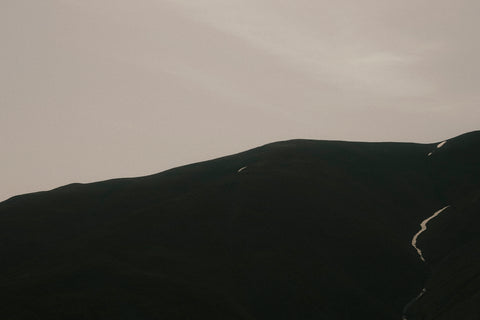
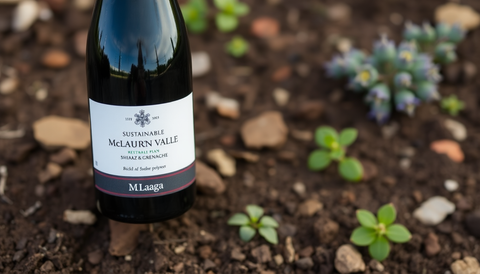

Comments (0)
There are no comments for this article. Be the first one to leave a message!